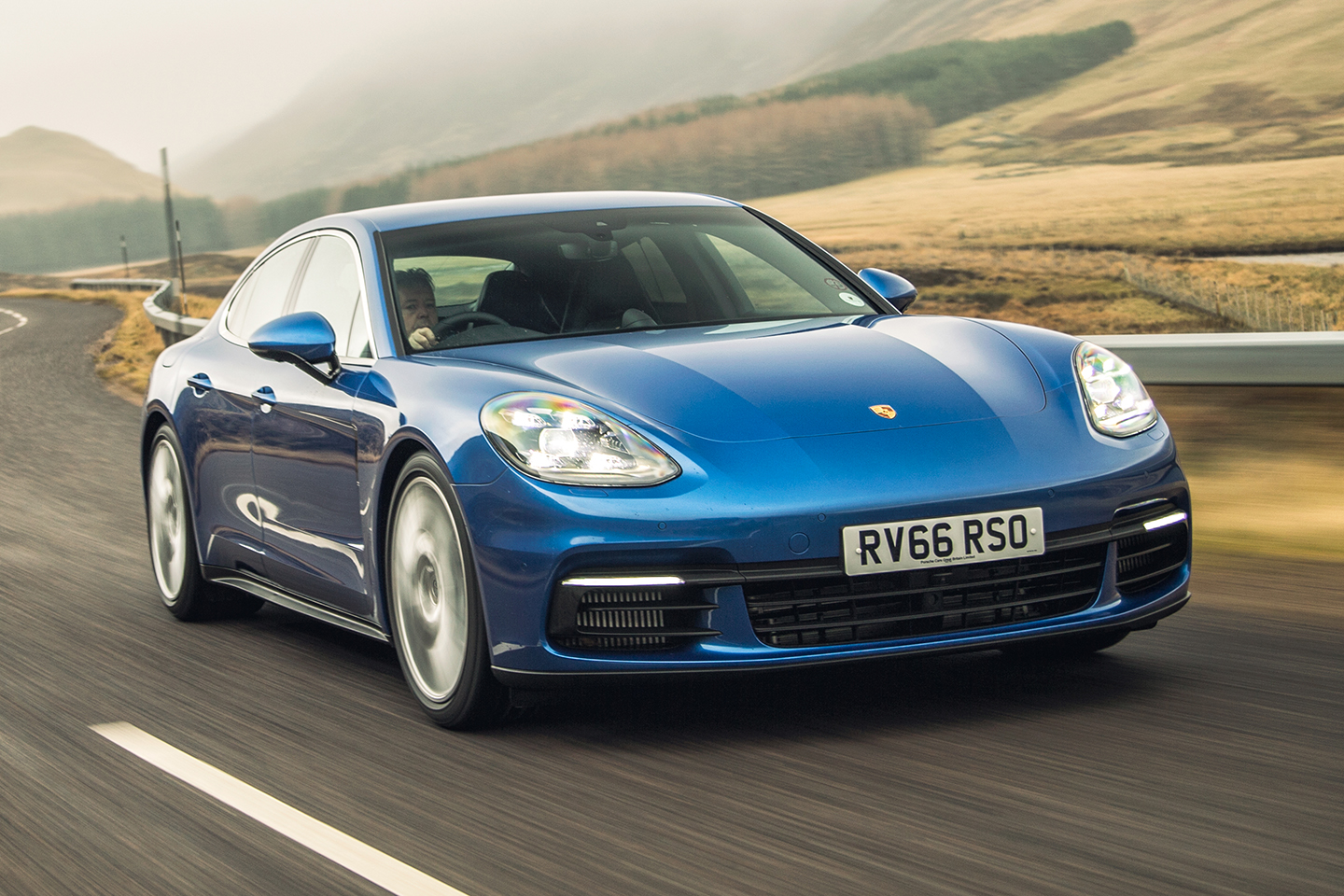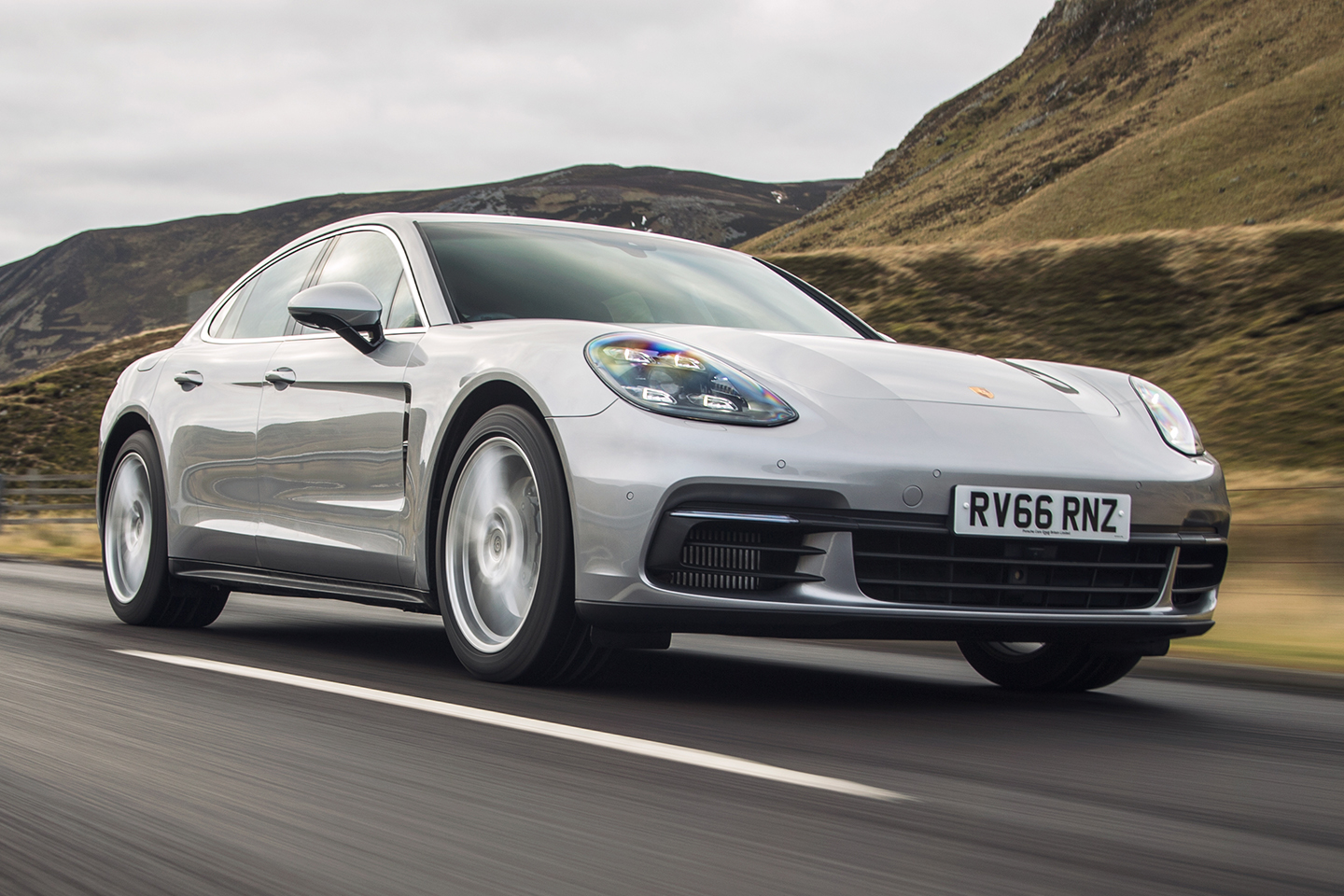Porsche Panamera (971) | PH Used Buying Guide
Better looking and more reliable than the original, the second gen Panamera has an awful lot going for it
Key considerations
• Available for £57,000 (4S)
• 2.9-litre V6 petrol twin turbo, all-wheel drive (4S)
• Monumental (but low-profile) performance
• 2017-on 971 has far fewer issues than 970 gen-one
• Looks better, too
• Low depreciation
See every used Porsche Panamera for sale
For many hardcore Porsche fans, the idea of a family-sized 911 always looked like an impossible stretch. Eventually, however, the urgent economic need to broaden Porsche’s range turned the stretch into reality, in the unveiling of the production version of the first 970 Panamera at the 2009 Shanghai show. It was effectively a modernised version of the 928-based 989 four-door prototype that hadn’t been able to get beyond prototype stage.
It wasn’t that hard to understand the fans’ misgivings about the idea of a ‘family 911’. A big part of the 911’s appeal lay in its sparseness. Light weight, not heavy horsepower, was the key to its sporting talents. The Panamera wasn’t short on performance, but the demands of its market – plenty of luxury and modern tech – meant that its speed had to be achieved through more conventional means, in spite of rather than because of its weight.
Over the years the 911 has drifted from its conceptual origins, accumulating both power and weight, but clever fine-tuning of the balance of performance and comfort has kept the iconic coupe ahead of the curve. The Panamera is not an icon, but it is thirteen years old in total and six years into its second 971 iteration, long enough for meaningful conclusions to be drawn about the model’s credibility within the Porsche range. If you go on sales alone it’s been a big hit, selling well over a quarter of a million units, a lot of them to China where back seats were important.
If you had to sum it up in one sentence you might say that it blended continent-straddling comfort for four with granite-hard engineering and a mix of body control and steering that was little short of incredible considering the weight of the thing. It was longer, wider and actually higher than the gen-one, though it looked lower because of the 20mm cut in the height of the body above the rear passenger compartment. The new car also had a longer wheelbase.
On the chassis side, three-chamber air suspension was standard on most non-base models, but few buyers of ‘poverty’ Panameras passed up the opportunity to tick that box, so you’ll find that most used Pans of any spec are fitted with it. Sport Chrono was another popular add-on, providing wide adjustability of the responses of the throttle, steering and the standard eight-speed PDK twin-clutch gearbox. Adaptive anti-roll bars and dampers (PASM) and four-wheel steering were standard 4S features. Launch control was packaged up in the Sport Chrono option, as was a Sport Response button which gave 20 seconds’ worth of overboost coupled to a superfast selection of the optimum gear ratio for the job.

The 971 went a long way towards addressing the main issue that many had had with the gen-one Panamera, which was the styling. Although it was still challenging from some angles, the reworked, lower-rear-roofed gen two establishing a much closer visual connection between it and the 911. The 2017 release of the Sport Turismo estate added a useful extra string to the Panamera bow in terms of both styling and practicality, with a 4+1 seating configuration and a slightly better view out of the back window.
The 971 was new on the inside too, not just in the cabin but also under the skin with a refreshed chassis (works driver Lars Kern took a Turbo around the Nurburgring in 7m 38sec) and access to Porsche’s most advanced drivetrains. Of which there were a lot, from diesels and V6 and V8 petrols to hybrids.
Which all made picking the ‘right’ 971 Panamera quite a hard job. Diesel models like the 422hp 4.0 twin-turbo V8 4S Diesel combined JCB torque – 625lb ft from 1,000rpm – with staggering performance (it was the fastest diesel car in the world at the time of its launch, with a 4.3sec 0-62 and a 177mph top end) and the sort of monumental between-fills range that would ironically make them an easy choice for today’s buyers in these energy-stressed times. We say ironically because ‘dieselgate’ obliged Porsche to scrap its diesel programme in late 2017 just one year into the gen-two Panamera’s life. That severely limited the supply of used 4S Diesels so we’re going to put that otherwise highly desirable model on one side.
For mad power and performance numbers (680hp, 627lb ft, 0-62 in 3.2sec, 196mph) you would go for the 4.0 V8 Turbo S-E Hybrid, but the servicing requirements were potentially complex and expensive. Traditionally, the GTS is a shoo-in for ‘best all-round model’ in appraisals of any Porsche, and the Panamera GTS was suitably fab despite not going down the usual GTS route of sharing the S engine (instead being powered by a detuned version of the 4.0 Turbo V8), but we’re going to go slightly off piste this time and focus our buying guide attention elsewhere in the range.
If you’re wanting value for money, the entry-level V6 3.0 turbo petrol was a refined piece with more than enough urge (330hp/332lb ft) in standard trim and plenty of tuning options for dabbling into at a later date if you felt so inclined. This base petrol was one of only two 971s that could be bought in either 2WD or Porsche’s new 4D-Chassis Control all-wheel drive format, the other one being the no longer available base diesel. All the other 971s were AWD only, including the 4S which featured the new twin-turbo 2.9 60-degree V6 petrol engine. With 440hp the 4S was not far short of the 2019-on 460hp 4.0 V8 GTS on power. It’s been nominated by more than one respected source as the sweet spot in the new Panamera range, plus there’s a decent selection of 2.9s on the used market, so the 4S is the model we’ll be concentrating on here.
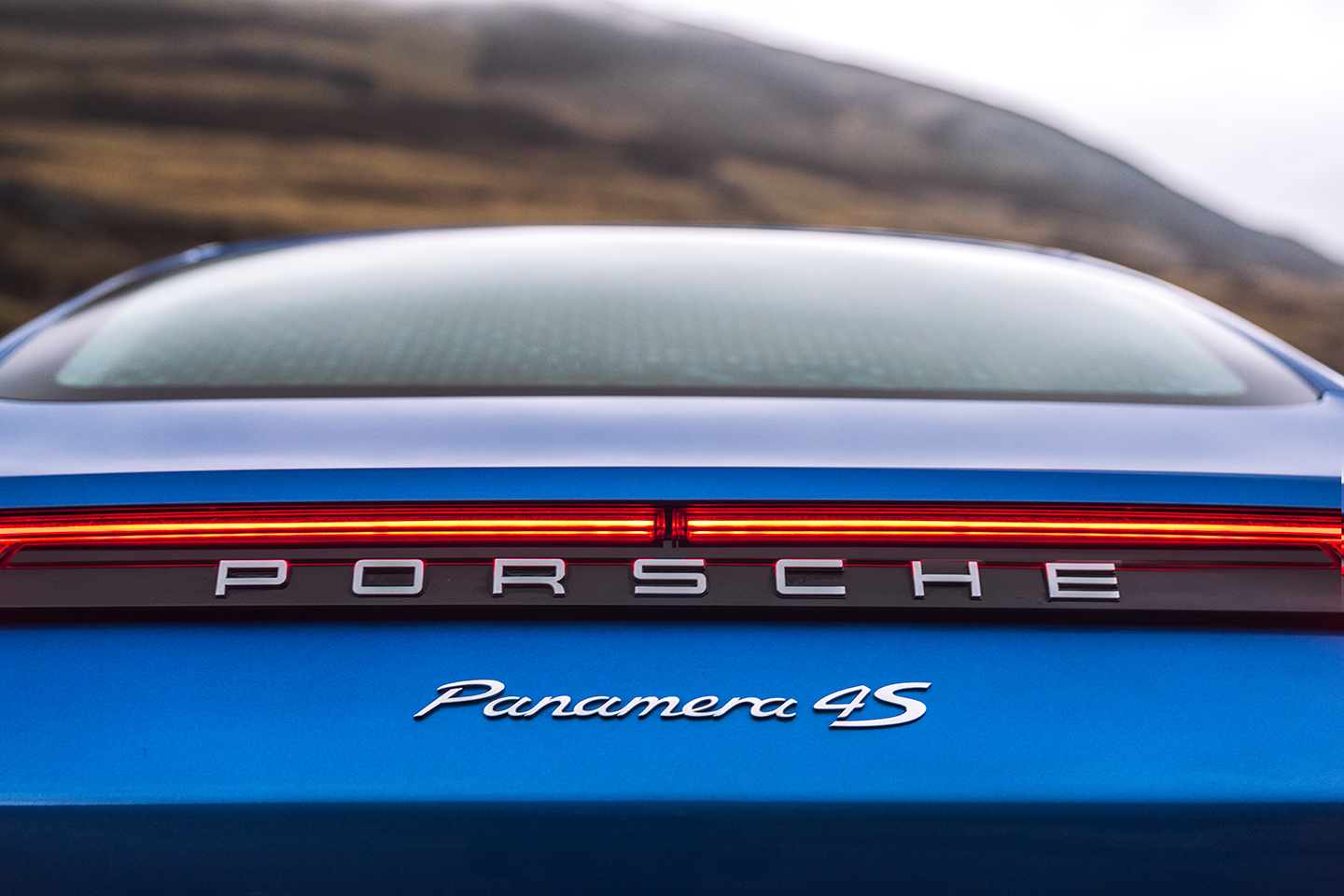
You could distinguish a 4S from the back by its round tailpipes. Turbo models had trapezoidal tail trims. A 2020 refresh to the gen-two Panamera brought a new front bumper, a tidier rear end, some chassis tweaks to make the ride a little more compliant and an uprating of the 2.9 and 4.0 engines (normal and hybrid).
Today, a new Panamera 4S will cost you £96,000 before options, or £99k for the 4S Sport Turismo estate. The GTS starts at £110,700, while the Turbo S and Turbo S E-Hybrids are all in the £140-£150k bracket. There’ll be a few months to wait for a new one, mind, and prices will be a lot higher than these website quotations once the inevitable barrowloads of options have been added. As a result, even pre-owned Panameras will routinely and quite easily exceed these official new car prices.
Depreciation is low but we can find some sort of refuge in the classified ads. Go far enough back and accept a high enough mileage and you will be able to pick up a used Panamera 971 for £50k. The cheapest 2.9 4S we saw in the UK was a 70,000-miler at just under £57k. It’s still a lot of money, but it’s a lot of car. In the course of this buying guide we’ll look in more detail at some of the elements that made the 971 Panamera a success, and see if there are any that might trip it up.
SPECIFICATION | PORSCHE PANAMERA 4S (2017-on)
Engine: 2,894cc V6 24v twin turbocharged
Transmission: 8-speed automatic, all-wheel drive
Power (hp): 440@5,650-6,600rpm
Torque (lb ft): 406@1,750-5,500rpm
0-62mph (secs): 4.4 (4.2 with Sport Chrono fitted)
Top speed (mph): 179
Weight (kg): 1,950
MPG (official combined): 25.9
CO2 (g/km): 186
Wheels (in): 9 x 19 (f), 10.5 x 19 (r)
Tyres: 265/45 (f), 295/40 (r)
On sale: 2017 - now
Price new: £88,700 (before options)
Price now: from £57,000
Note for reference: car weight and power data are hard to pin down with absolute certainty. For consistency, we use the same source for all our guides. We hope the data we use is right more often than it’s wrong. Our advice is to treat it as relative rather than definitive.
ENGINE & GEARBOX
The direct injection 2.9 V6 with twin ‘hot vee’ turbos was a fine, fast engine. It took the big Panamera through the 0-62mph run in just 4.4sec, or 4.2 with the Sport Chrono fitted, and it didn’t let up much after that either, running on to the 100mph mark in only ten seconds from zero.
It didn’t always feel like you were going particularly quickly, mind. It was more efficient fast than exciting fast. Maximum torque came in at just 1,750rpm. It seemed greater from 3,000rpm somehow, but that could have been an emotional reaction to what would by then have felt like rapidly gathering speed. Throttle response was spot-on, and it sounded good especially with the optional sport exhaust.
The gen-one 970 Panamera wasn’t problem free. There were quite a few instances of overheating engines as a result of failure of the auxiliary coolant pump, or of coolant leaking from the thermostat housing, water pump and associated pipework. Some owners had to resort to suing Porsche to cover the engine-out costs involved in fixing leaks at the back of the engine near the transmission joint. Happily, however, there are no indications of endemic problems with gen-two Panamera V6 engines.
The eight-speed PDK gearbox was rated to 737lb ft, with the top two ratios overdriven to improve efficiency. Top speeds were achieved in sixth gear. The box was designed to learn an owner’s driving style and thereby provide intelligent changes, but not everyone was convinced that this process was happening as it should. The trans could be slightly jerky at town speeds, especially on downshifts in Sport mode, and even more in Sport+ mode in cars with Sport Chrono fitted. It could also come across as a little over-protective of the engine if it felt that manual downchanges were being attempted at too high a rev count. If it did come to that conclusion, it simply wouldn’t allow the downshift. Clearing the driving habits of previous owners by resetting the PDK software sometimes helped to smooth things out on a used car.
If you’re after a twin-turbo 2,894cc 2.9 4S make sure that is what you’re buying and that you don’t end up with a 2,995cc 3.0. There’s nothing wrong with the 3.0 but if someone is ‘accidentally’ advertising their 3.0 as a 2.9, and you accidentally buy it, you’ll be considerably shortchanging yourself on power. It might seem a bit daft to mention all this as the ’4S’ on the badge at the back should be a pretty obvious clue as to what you’re buying, but some cars do get de-badged. Accidentally or otherwise.
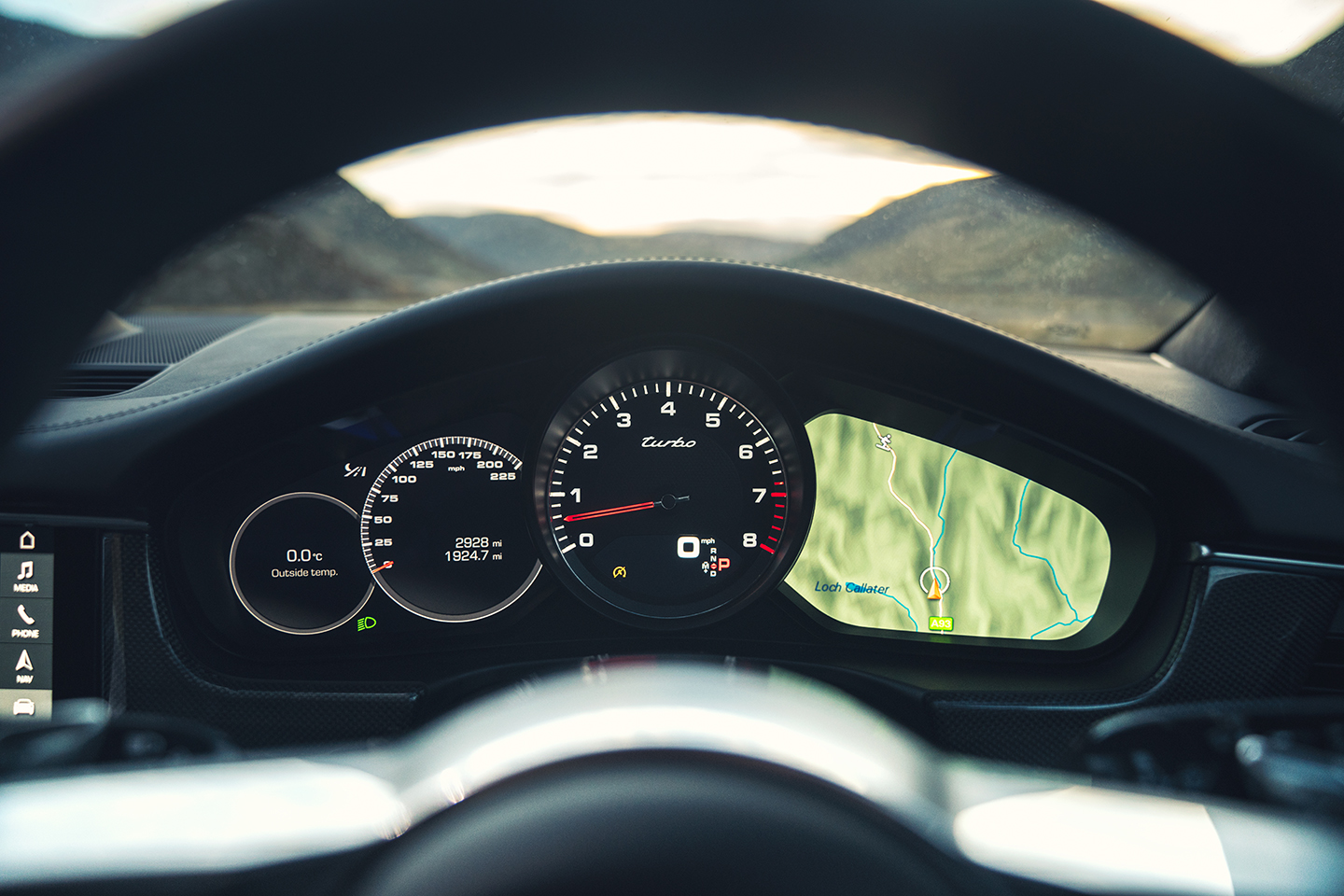
Trying to establish accurate fuel consumption figures for the 971 Panamera is a surprisingly frustrating exercise, partly because of the confusingly wide range of engine options, the new WLTP measuring yardstick and the internet’s penchant for never supplying the same figure twice. We’ve seen 34.5mpg given as the official combined mpg figure for the S 2.9 but we’ve also seen 25.9mpg. Even if we take that last one as more realistic for a 440hp car weighing nearly two tonnes, the Pan’s 90-litre (nearly 20 gallon) fuel tank should still be able to deliver 500 miles between fills. Obviously driving habits can increase or decrease that, but that kind of range underlines the Panamera’s touring credibility.
Establishing the costs of servicing a Panamera via an Official Porsche Centre can be annoying too as OPCs aren’t keen on divulging that sort of info on their websites. We did however find an older PDF detailing the service elements – basically a fault code analysis, replacement of pollen filter, oil filter and engine oil, and a general inspection – which are carried out on a two-yearly/20,000-mile basis with additional checks and adjustments carried out in years four, eight and 12. The service at six years/60,000 miles is a big one involving new spark plugs, new transmission oil and a new air filter.
The OPC prices given on this PDF were only valid up to the end of 2019, so they’re bound to be higher in 2022, but they’ll give you an idea at least. For the 4S, the two/four/six/eight/10/12-year costs were £625, £750, £1,225, £595, £550 and £1,395, a total of £5,140 over the twelve years. For comparison, the equivalent service costs for the high performance Turbo Hybrids were £650, £1,095, £1,095, £895, £550 and £1,495, a total of £5,780 for the same period. A brake fluid change and tyre sealant check outside of a normal schedule service was £120 at that time. The 111-point check required to qualify a car for a Porsche Approved warranty was £216.
Even well-regarded independents don’t always put their prices online. We’re not going to get into recommending any one in particular but a random dip suggests a typical charge of £320 for minor services and £440 for majors. It goes without saying that full service histories are pretty much essential on Panameras if you plan on selling the car at any point.
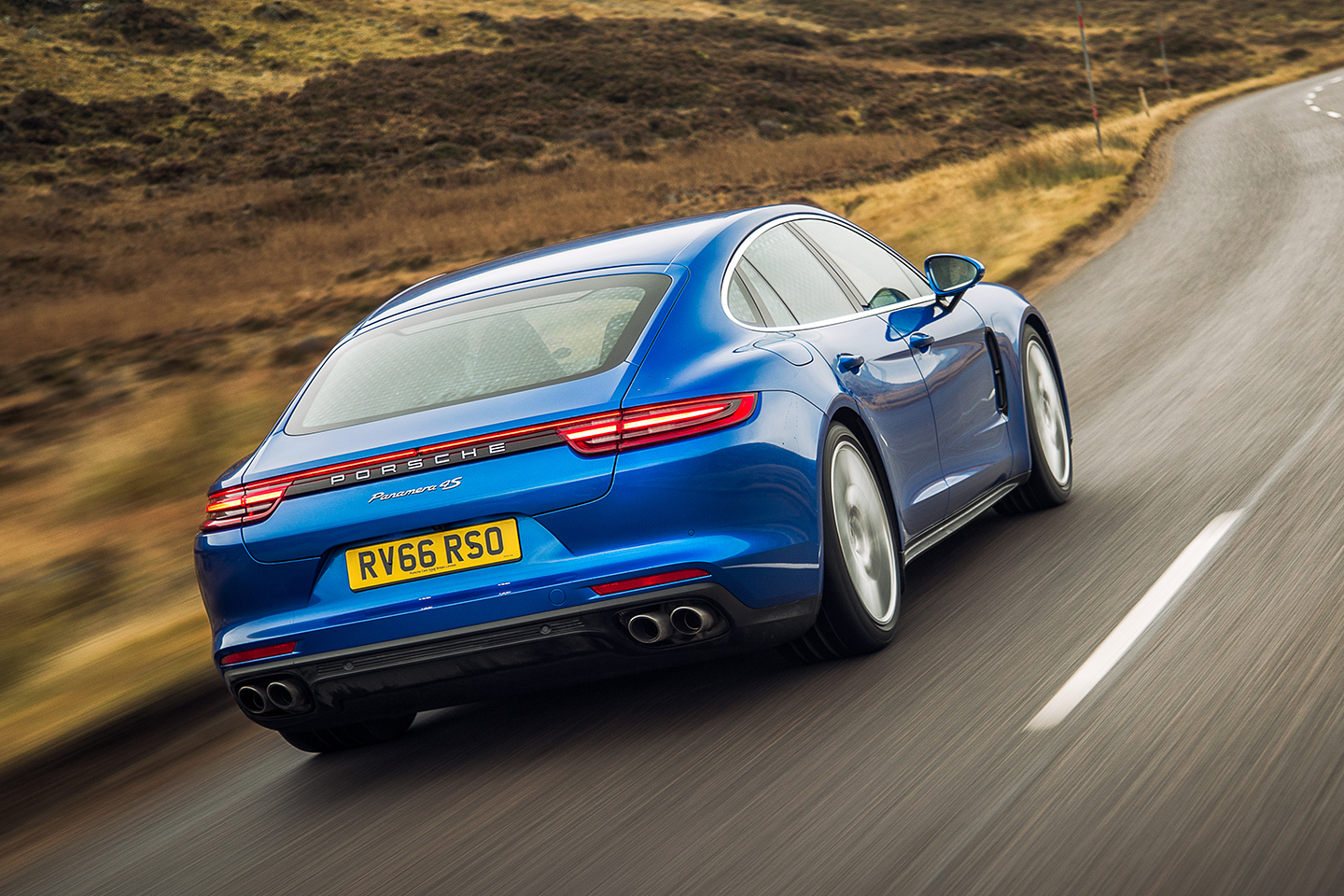
CHASSIS
Was Porsche’s refresh of the chassis successful? Put it this way, you’d never believe it weighed nearly two tonnes. Particularly with the adaptive air suspension in place, as it was in the 4S, the ride was comfortable in softer modes and even on full hard over rough roads there was never any suggestion that your back was going to take a beating.
The 971’s air suspension had 60 per cent more air volume than the 970’s. You could use it to lift the front of the car by 20mm to clear obstacles or, at speed, to lower the front axle by 28mm and the rear by 20mm. Options included Porsche Dynamic Chassis Control (PDCC), a 48-volt electromechanical anti-roll bar system. The 4S came with all-wheel steering as standard. At under 30mph this turned the rear wheels in the opposite direction to the fronts for easier manoeuvring. At higher speeds it turned them in the same direction as the fronts (though not quite as much, obvs) for better responsiveness.
The relative lightness of the 2.9 engine compared to (say) one of the diesels or V8 units translated into a noticeable uplift in front-end positivity and wieldiness, aided by excellent steering weighting and feedback. Even if you turned off all the driver aids on an AWD Panamera the system defaulted to a well-judged distribution of front/rear torque that provided safe front-drive haul out of corners with just a whiff of back-end skiddery.
The Panamera’s bulk was bound to have some sort of impact on the suspension, and gen-ones were known for issues in this department, specifically with control arm bushes and compressors. Early on in the 971’s life Porsche put out a recall to address concerns about the potential premature failure of the rear anti-roll bar links. If odd noises seem to be coming from the back end of any 971, you’re testing it’s worth checking the paperwork to ensure that this recall work has been carried out.
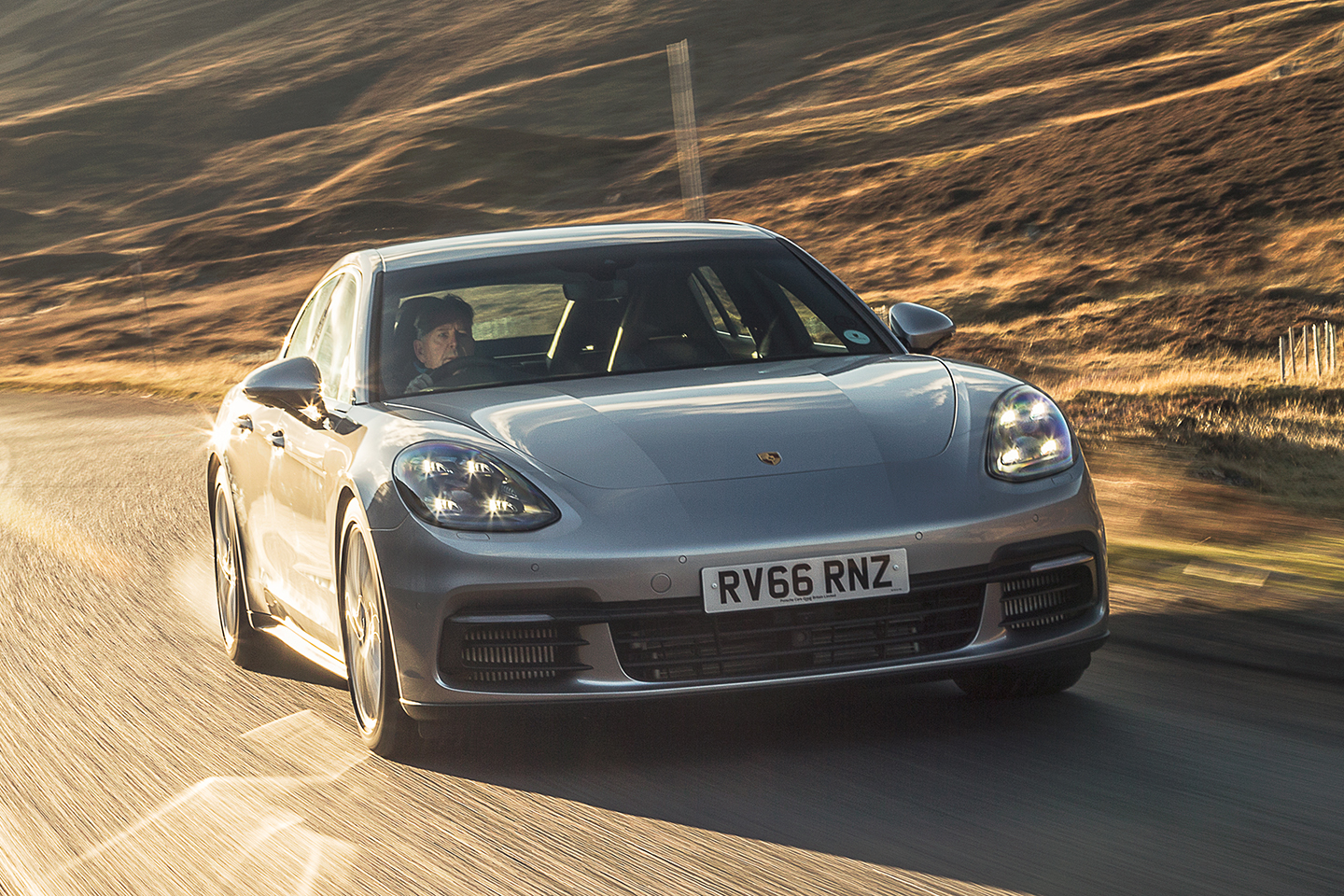
BODYWORK
The Panamera was the first car to be built on VW’s MSB platform. The bonnet, side panel and roof were all made from aluminium.
Earlier on we mentioned the 971’s restyling which established a closer visual link between it and the 911, Boxster and Cayman. The key features were a new grille and air intakes up front and new full-width LED lights at the back (LED matrix headlights were an option). Soft-close doors were standard on the 4S as was foot-wave hatch opening. Perhaps the most striking thing about the Panamera’s body was just how solid it looked. It wasn’t just a styling trick either. That visual sensation of solidity was backed up by the driving experience.
Not everyone has been impressed by the operational efficiency of the windscreen wipers. One owner of a 25,000-mile 2017 Sport Turismo complained about a cracking noise from the sunroof when manoeuvring, along with rattles on the move. At one point on a warm day the roof stuck open. It did come back to life later that day, but the three-year factory warranty was finished and the extended third-party warranty didn’t cover it.
The Panamera’s automatically operating rear spoiler could malfunction too, either sticking or deploying at a jaunty angle not envisaged by Porsche engineers. Filler caps could require a hefty push to open them.
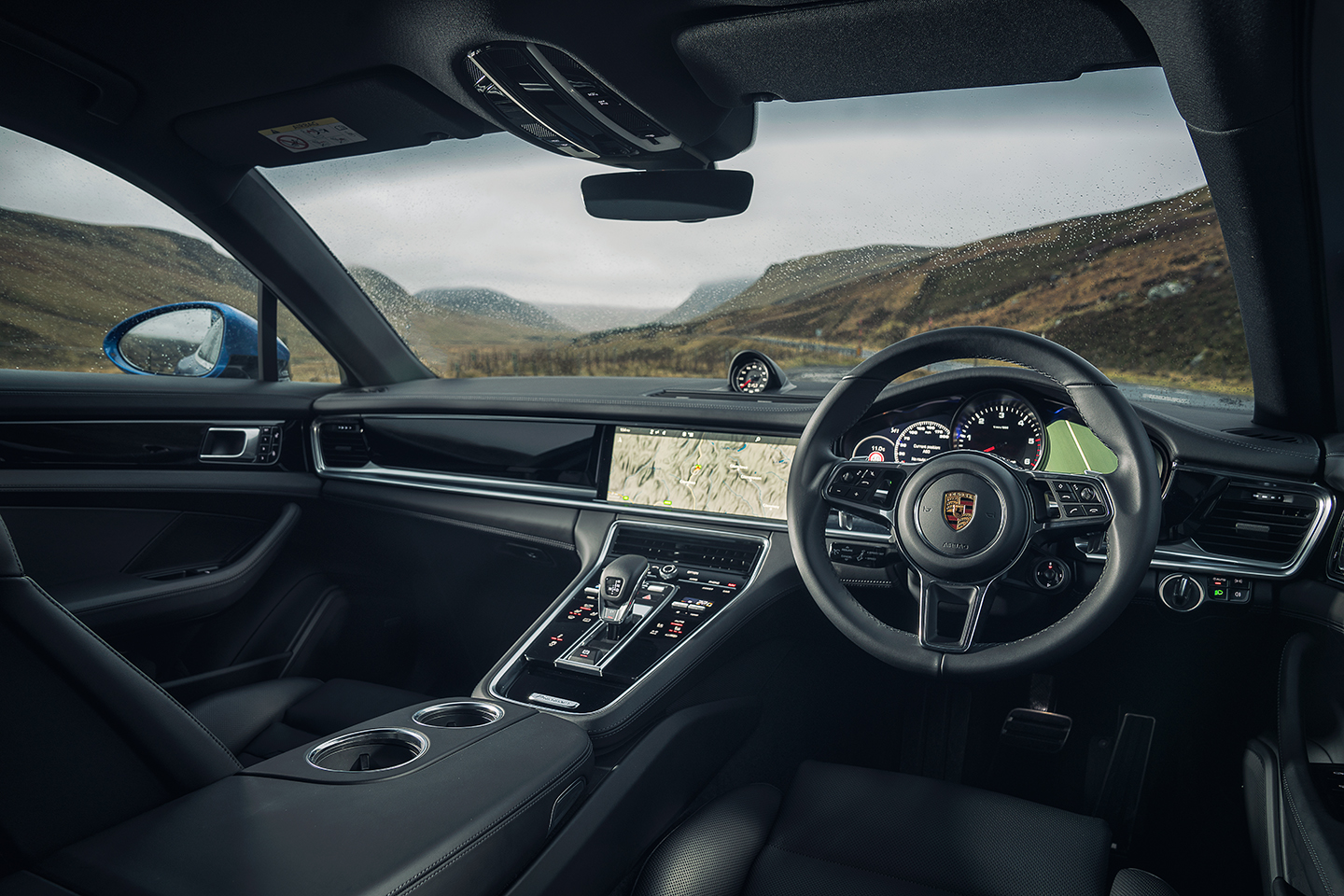
INTERIOR
The cabin of a 971 Panamera was a special place. When new at least, build and materials quality were both first-rate. Front passengers were cosily hemmed in by the doors, the massive centre console and, directly ahead, by an impressive phalanx of high-quality instrumentation dominated by the wonderfully sharp 12.3-inch colour touchscreen for the Porsche Communication Management system, just below the clock binnacle for the Sport Chrono (where fitted).
Additional seven-inch screens sat either side of the front-and-centre 356-tribute analogue tachometer. Just about everything was configurable to your taste but there was no Android Auto compatibility as Porsche reckoned that all or at least most of its customers were iPhoners. You could download a Porsche app for Android though.
There’s not a lot of point going on about what equipment you got and what you didn’t get in a Panamera because Porsche has famously turned option-box-ticking into an Olympic sport and you are extremely unlikely to find any two cars the same. Suffice it to say that even an options-free Panamera is lavishly equipped. Burmester sound was a near-£5,000 upgrade that is always a nice thing to find in any used Panamera. Massage seats are desirable, too.
Those who liked lots of buttons to play with might have preferred the 970 gen-one over the gen-two, where much of the buttonfest around the gearshifter was kicked into touch by smooth glass touchpanels. Say what you like about buttons, but once you’ve lived with a gen-one Panamera and become accustomed to their locations you might wonder about the point of touchpanels. In their defence, the ones in the 971 had haptic feedback to give you more of a sense of involvement.
The sense of specialness extended to the rear compartment where passengers had individual rear seats flanking a front cabin-mirroring console that housed a 4.6-inch colour touchscreen. Despite the coupé-like styling, four six-footers would easily fit inside a regular Panamera. 150mm longer-wheelbased Executive models added truly luxurious levels of legroom, but used examples of this model are tough to find.
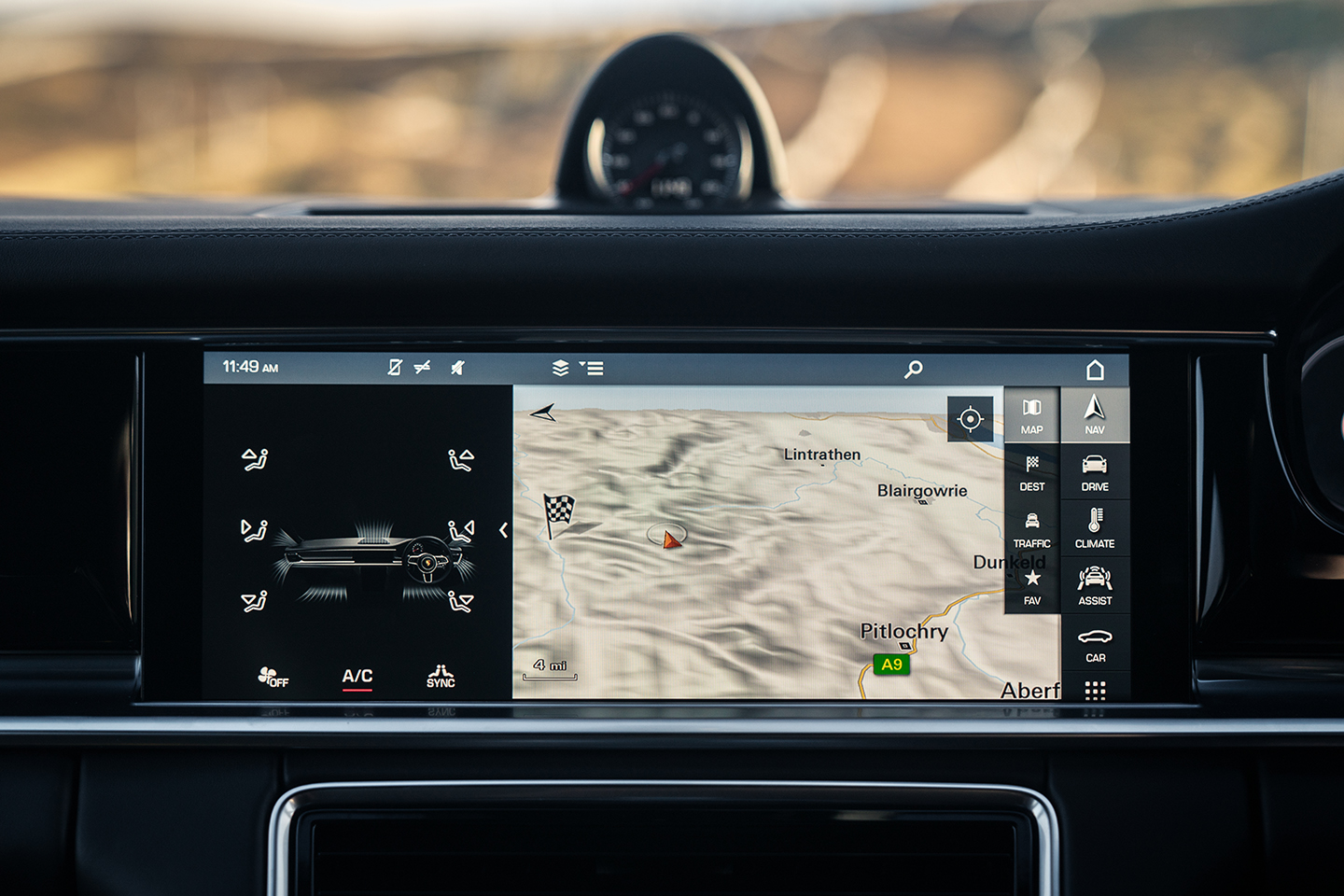
If you wanted to enjoy a weekend away with the other half, leaving the children at home, any 971 had 1,340 litres of cargo space when the back seats were folded down, compared to 495 litres with the seats in place. If you had an occasional need to carry five, the 20kg heavier Sport Turismo estate gave you a small central rear seat and a bit more headroom, but not much extra in the way of cargo carrying ability, with no more than a 50-litre boost in non-hybrid models over the equivalent non-Turismo Panameras. That 4+1 seating layout became available on regular Panameras from 2018, incidentally.
Some have found the configuration of the drinks holders to be a bit odd, saying that only one is fully useable. Others have noticed occasional glitches with the cruise control, but either of these could be down to user error. Rattles from the optional 18-way heated seats and from the rear parcel shelf have been noted.
Some owners have experienced trouble with PCM updates being ‘found’ but not downloaded. After various escalations from local OPC level, that complaint went all the way to Germany. The issue was eventually resolved by an OTA (over the air) software update. Problems with sat-navs not remembering recent destinations and/or not storing the names of locations had been reported on earlier Panameras. One owner was quoted £5,000 to replace the sat-nav unit. This is not strictly relevant to this guide, as the car we found with this fault was a 970 rather than a 971, but we’ve included it for interest and as a salutary guide to potential Porsche costs. Here’s another: £3,000 to replace a stone-chipped night vision assist camera. One 2020 software ‘update’ for the 971 caused the PCM to constantly reboot, bringing worries about battery drain. As with all complex modern cars, battery condition is of paramount importance on a Panamera.
One owner had a big bundle of electrical system faults come up on his 4S E-Hybrid Sport Turismo (airbag error, various safety functions not available, right side of the Burmester sound stage not working etc). Rectifications were carried out by the OPC, but the airbag error fault returned a couple of months later.
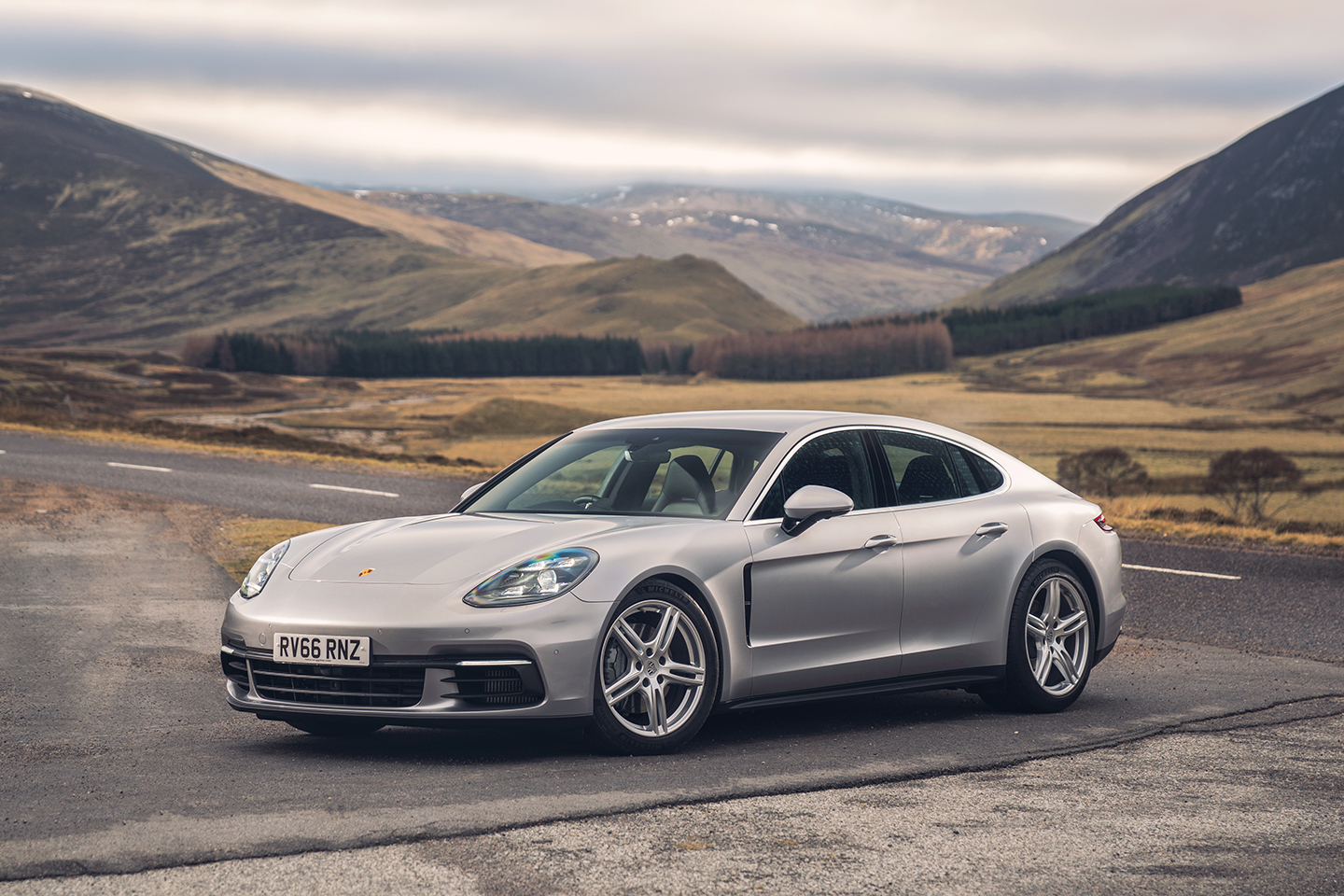
PH VERDICT
The gen-one Panamera had divisive styling and was not the most reliable of cars. As you’d expect to happen, the gen-two was a noticeable improvement pretty much right across the board. Most if not all of the gen-one’s most significant glitches were sorted out. The result was a high quality, dynamically excellent and beautifully built four- (or at a pinch five) seat grand tourer whose ownership and driving experience felt more special and more of an event than that of Audi’s A7 Sportback or BMW’s 6 Series Gran Coupe.
It’s true that the excitement factor was maybe a little out of kilter with what you might expect from such storming acceleration, but that’s why a Panamera isn’t a 911. Buying a used gen-two Panamera shouldn’t mean instant obsolescence and plunging values when the gen-three comes out at the end of 2023 because all the indications are that the next Panamera will continue to be available with petrol drivetrains, with spy shots of development cars suggesting that any bodystyle changes will be subtly evolutionary rather than value-destroyingly wholesale.
The upshot of that should be continued appeal and continued low depreciation. As noted earlier, the cheapest UK 4S 2.9 we saw in our research was £57,000. Cars with mileages in the low forties or high thirties will typically cost around £65k. £70k will bring a 4S odometer’s reading down into the 20k region.
The most affordable 2.9 4S on PH Classifieds at the time of writing was this 71,000-mile 2017 specimen in Volcano Grey with 21-inch wheels at £58,995. For a thousand pounds more you could jump into this 59,000-mile Sport Turismo estate. STs accounted for nearly half of the 2.9 971s that were for sale on PH Classifieds at the time of writing. As an example of how Porsche dealers are pricing stock at the top end of the price scale, here’s a facelift 4S from 2021 with 9,000 miles at £97,445.
See every used Porsche Panamera for sale
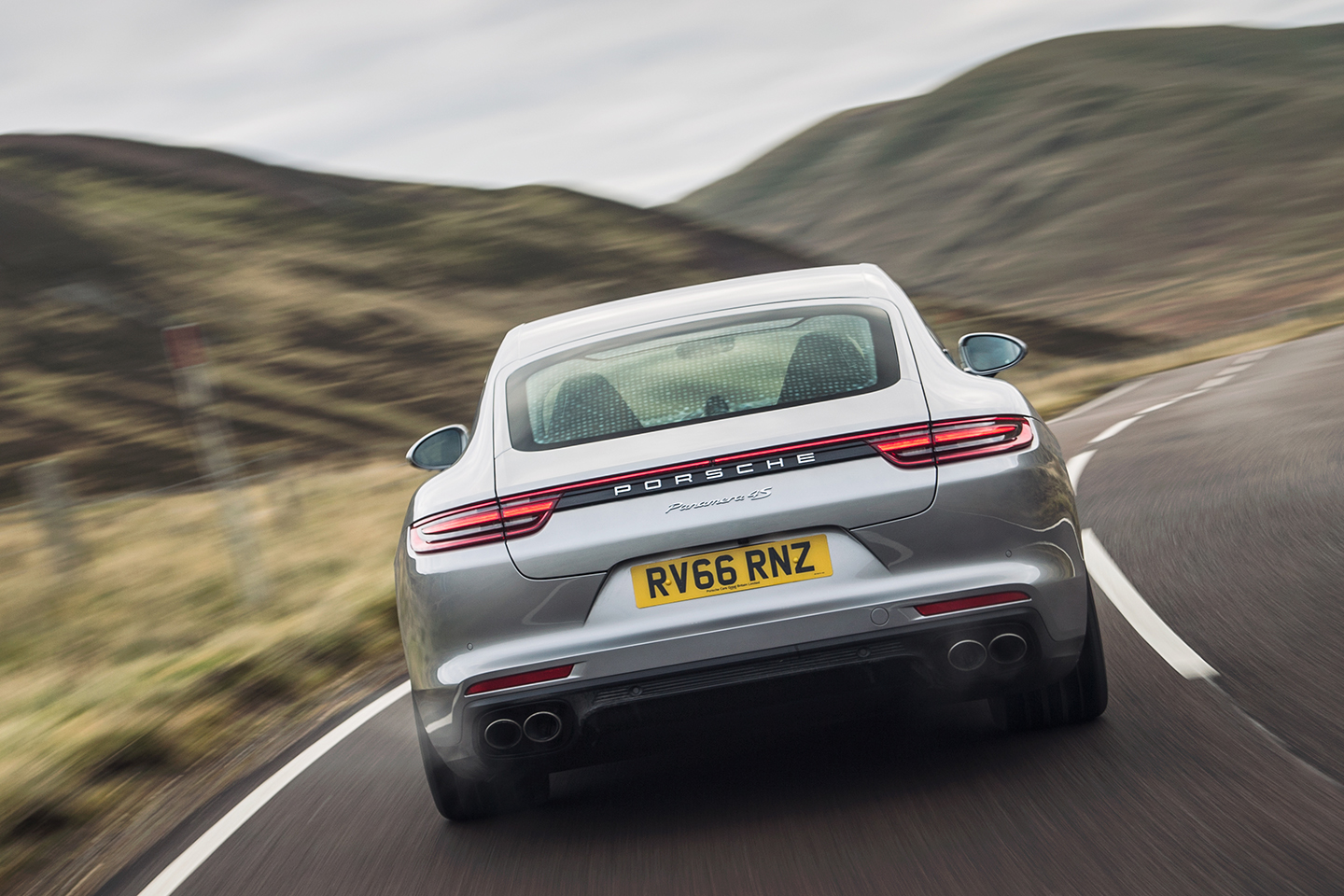
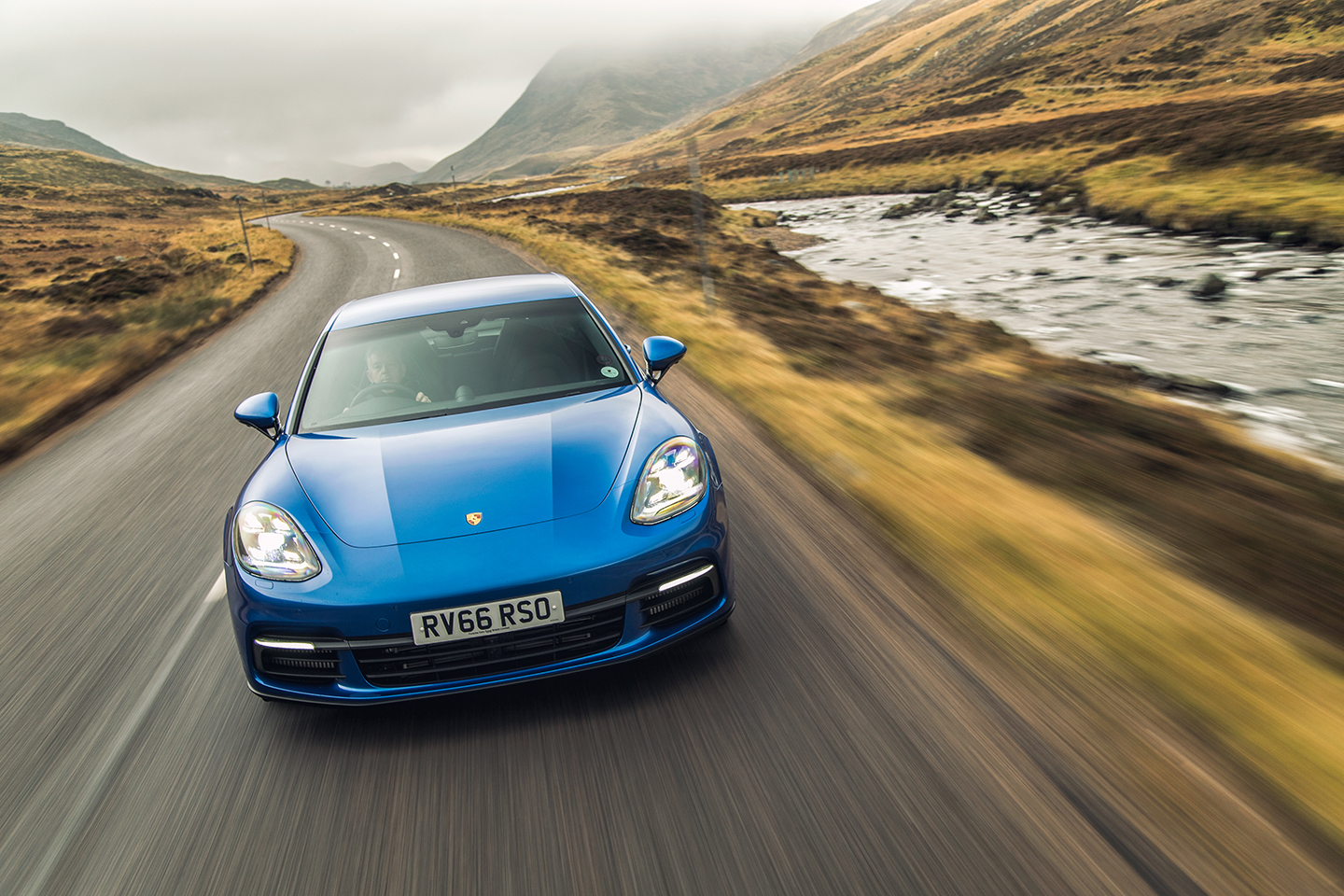
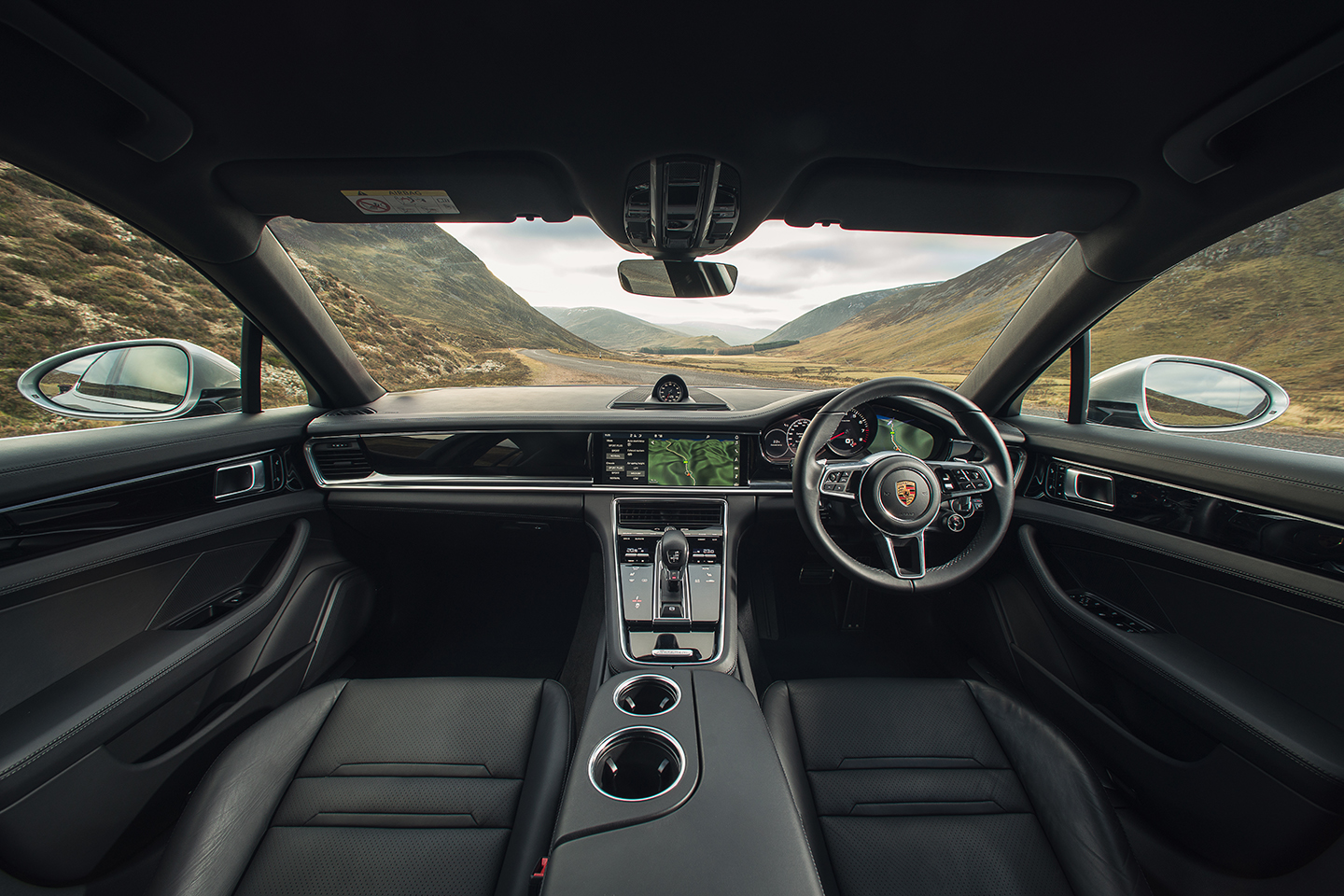
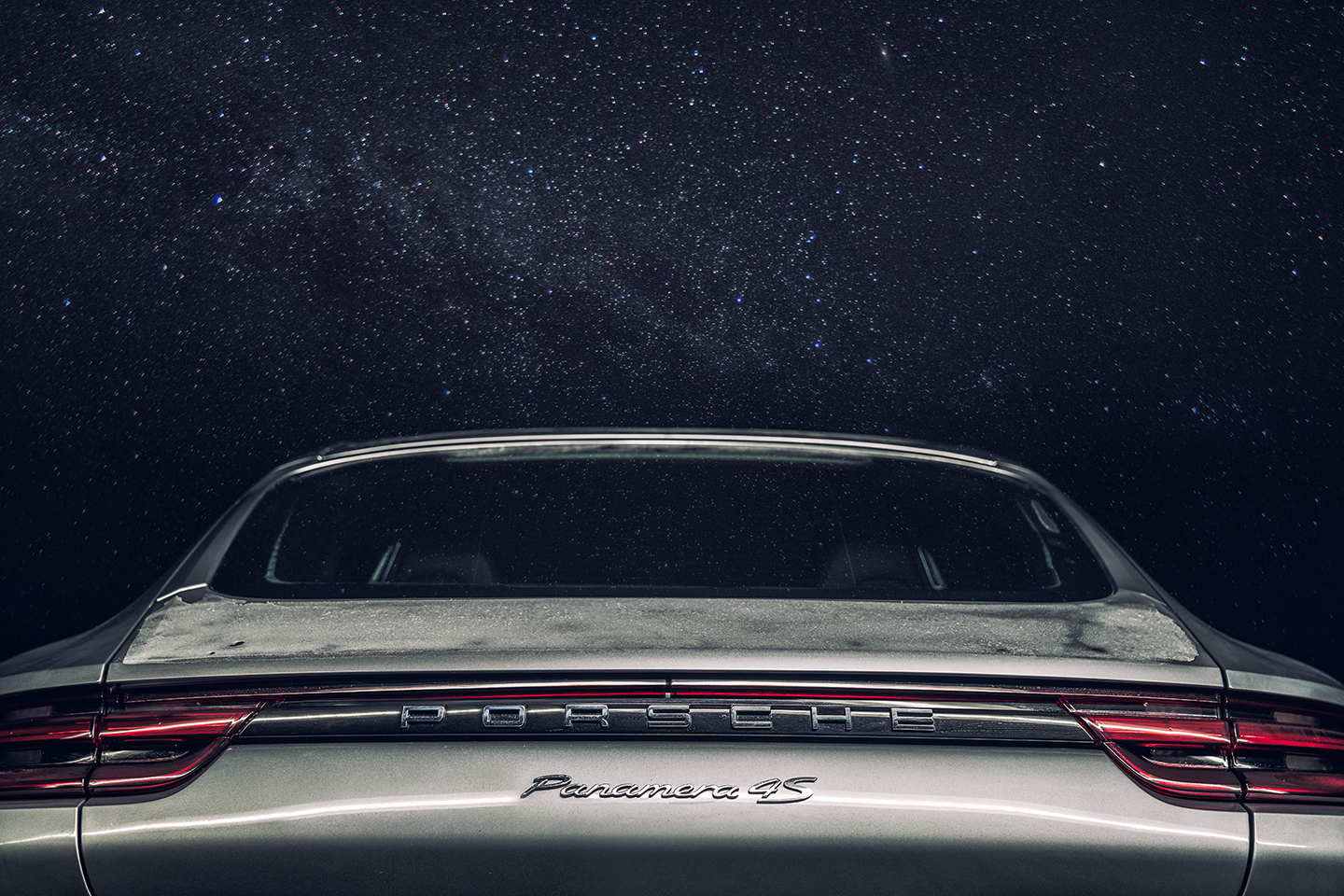
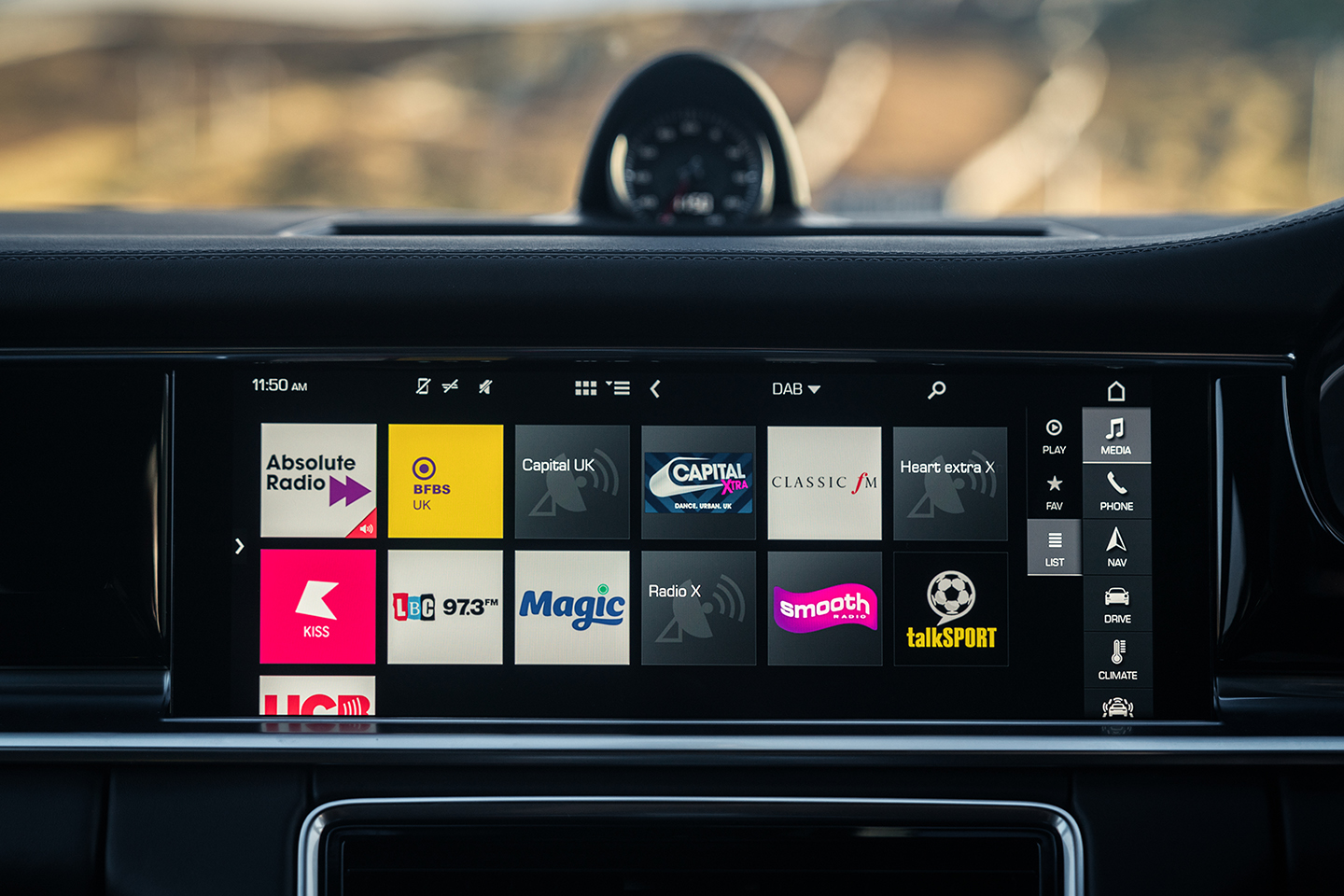
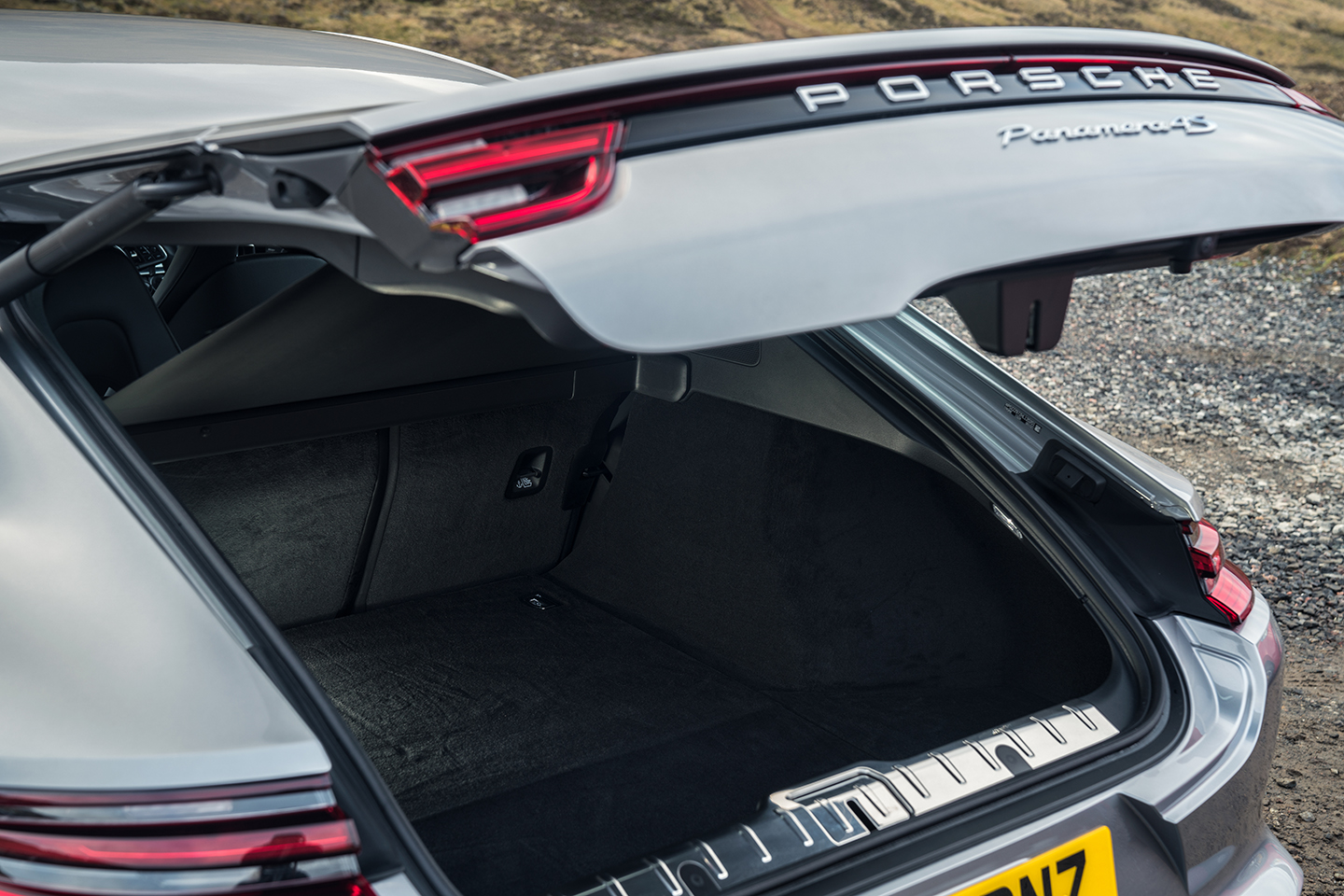
I did originally want the Sport Turismo, but they do hold their price well, I found this one with all the spec I wanted, I clucking the amazing matrix headlights, and the turbo style wheels, and sport design body kit too.
I would love to change it for a Taycan at some point, but out of my price range at the moment!
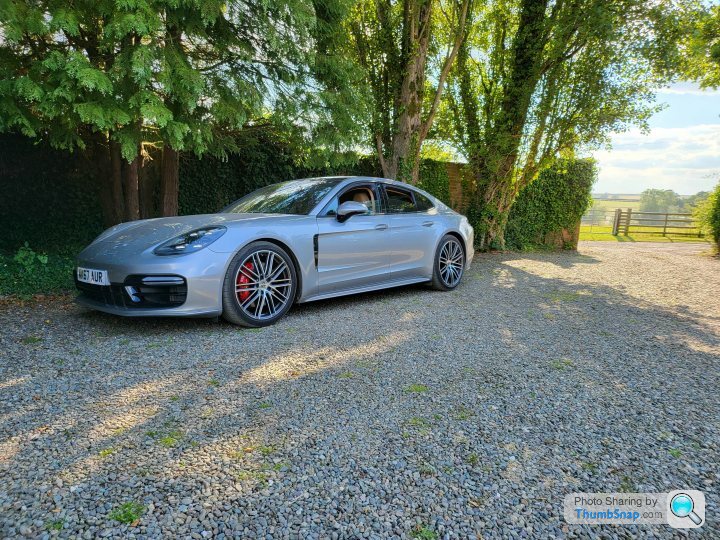
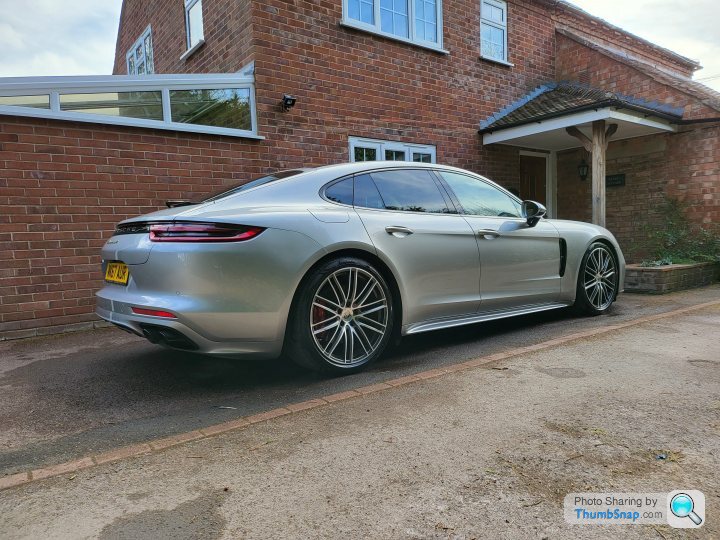
Lighter interior
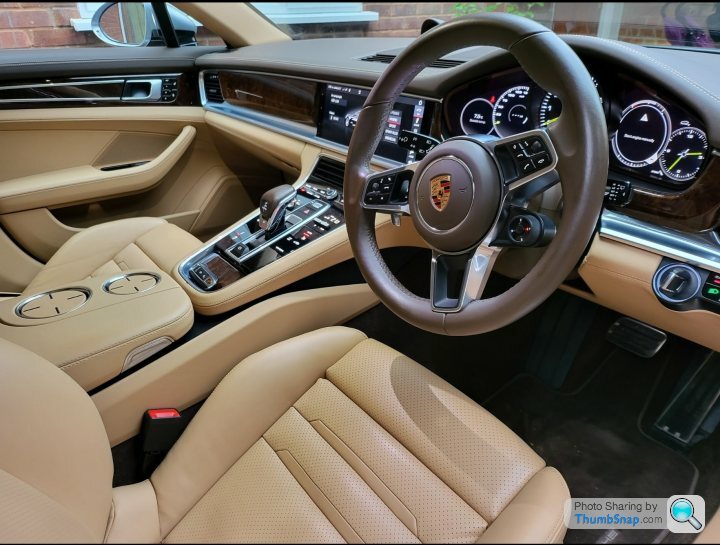
I did originally want the Sport Turismo, but they do hold their price well, I found this one with all the spec I wanted, I clucking the amazing matrix headlights, and the turbo style wheels, and sport design body kit too.
I would love to change it for a Taycan at some point, but out of my price range at the moment!
Lighter interior
(p.s. I'll never be in the market for either coz £££)
https://mychiptuningfiles.com/en/chiptuning-files/...
Now that WOULD feel fast I'll wager. .
I did originally want the Sport Turismo, but they do hold their price well, I found this one with all the spec I wanted, I clucking the amazing matrix headlights, and the turbo style wheels, and sport design body kit too.
I would love to change it for a Taycan at some point, but out of my price range at the moment!


Lighter interior

Not sure what your family status is but I've got 2 kids, 11 and 8, as well as a border collie...would the Pan be practical in that sense? The dog sits/lies in the boot of our SUV, just seeing whether the dog would be comfortable on a long journey in this.
Cheers
I did originally want the Sport Turismo, but they do hold their price well, I found this one with all the spec I wanted, I clucking the amazing matrix headlights, and the turbo style wheels, and sport design body kit too.
I would love to change it for a Taycan at some point, but out of my price range at the moment!


Lighter interior


Not sure what your family status is but I've got 2 kids, 11 and 8, as well as a border collie...would the Pan be practical in that sense? The dog sits/lies in the boot of our SUV, just seeing whether the dog would be comfortable on a long journey in this.
Cheers

I would say it should be fine for your needs. We have a 3 year old, and a 8 week old, the boot easily takes 2 prams/assorted children's gubbins. The hybrid does have a slightly shallower boot though, because of the batteries, it's still a good size though, and the parcel tray can be removed to give your collie a view out. There would be loads or leg room for your 11 and 8 year old as well. The Sport Turismo would be even better too, with boot space.
Edited to say as well, one problem with this shape is that it doesn't have a rear middle seat, just storage space, and a screen for the controls in the rear, the ehas been some times where it wouid have been good to take an extra person! (I think the Sport Turismo has a middle rear seat)
Perfect for four adults plus two dogs in the boot. Was prett quick (IMO, my first performance car) and supremely comfortable with the air suspension.
Not sure the details on standard spec are right in the article though… mine didn’t have rear axle steering or foot waving to open the boot.
The sports exhaust really enhanced the sound.
Only moved it on (after a year) when the chair (wo)man of the investment committee got a Macan S and suggested that we didn’t need two family cars so I got a 992 C4S!
I poured over spec and don’t think soft close plus many other indicated options were standard on the 4S, as the article claims.
Notwithstanding that, the 2.9 is an unremarkable engine; it’s definitely quick enough but I always felt it seemed lightweight for this kind of car. The turbo is probably not much thirstier but has impressive oomph and doesn’t feel particularly turbo charged, albeit not quite as nuts as my last Turbo S. I did a 280 mile road trip last week on a real mix of roads with some pretty spirited driving and it still gets 30mpg - not bad for what’s on offer. Must have options for me are (some may be standard but I always buy secondhand):
Rear axle steer
Sports exhaust
Pano roof
Ventilated seats
Adaptive cruise (I’ve never been convinced by my innodrive, Mercedes’ and BMW do it much better)
4 zone AC
Comfort access
Surround view
I wish I could have had surround view, Burmester and PCCBs but beggars can’t be choosers. I find the Panamera more refined than the E63, M5 etc but it probably gives up some sharpness at the absolute limit as a trade off. That’s not important to me, however.
On my first gen cars the only reliability issues I really remember were the PDCC reservoir (fixed under warranty) and AC condenser (also fixed under warranty). Porsche warranty has been great on all occasions and I wouldn’t run one without it, same goes for the AMG and BMW products I’ve run.
Overall, they’re very well made cars and the first gen felt a bit more luxurious / refined than the latest one but the body control on the 971 is in a different league.
I thought about moving mine on recently but after testing the competition (other than the new RS6), I couldn’t bring myself to part with it, for long journeys it’s a very compelling machine.
Thought long and hard about the competition - E63, Taycan, RS6.
In the end a full EV was out. I just KNOW i'd get caught out one day having to go/return to/from somewhere without enough charge with Baby/Wife/Dog in the car. I'd watched so many video on youtube of owners having to queue to charge somewhere and the chargers are broken/not compatible/busy/taking ages. So although I could charge at home, until the charging network is like Petrol stations and you can charge it up in 10 minutes, my big family car can't be EV. So Taycan was out. And the interior of the Taycan feels like a substantial quality downgrade to me vs a Panamera.
E63 has got an absurdly bad ride. It what I was coming out of.
RS6 is just overstyled and a little too rude (perhaps I'm too old) and ICE only drivetrain feels a little prehistoric now IMO.
Went for a Panamera Hybrid. I'm doing about 900-1000 miles on a single tank of fuel as 31 mile electric range covers so much of my mileage and yet I have zero range anxiety if I have to drive to Scotland. Cracking product. Super comfortable (how they get the ride so perfect, I'll never know), and really handles too and quick. Harry Metcalfe review of one sold me on the concept and it works just like I thought it would. Superb car. Quite rare too unlike Taycan which, although a nice car, has become a fashion victim's car.
BUT,
I'd like it to be quicker and I can't put my finger on why. Perhaps, electric fed power delivery is so linear that it doesn't feel fast enough. Probably me being silly. I've ordered the 700hp Turbo S but probably won't take it as they're building a new version next year with even more hybrid range. Was going to say that it's too expensive, but then EVERYTHING is expensive today....
I had identical thoughts about the Taycan, impressive as it is. The only full EV I would consider would be the Lucid, which sounds similar to the Panamera in terms of ride, refinement and interior space. Range does look good too but until the infrastructure catches up, I’m going to sit on the sidelines.
I had a long drive in the Turbo S hybrid and it felt quite a lot heavier than the turbo, unsurprisingly. A friend managed to spin one at the Porsche Experience Centre!
RSJ - helpful, but don't really sell these cars.
911Virgin - don't sell these
Northway - gent I spoke to strongly advised me to stay away. Said they were unadvisable at every level!
What sort of MPG can you expect from a non-hybird Mk2 car for town driving alone?
Gassing Station | General Gassing | Top of Page | What's New | My Stuff

